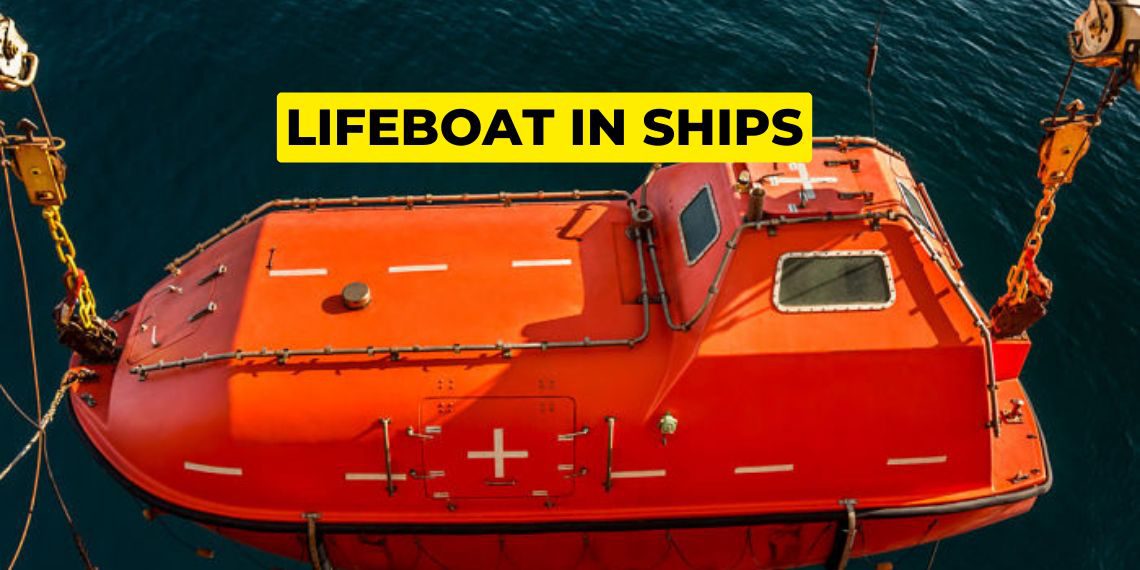Lifeboats and their Types
Hey there, today we are going to talk about something that substantially changed the shipping industry down to its roots, and that is Lifeboats. The origin of the Lifeboat is quite bizarre as it started due to a shipwreck in 1789 at the mouth of Tyne. At the time of its launch on 29 Jan 1790, there were disputes between three people Henry Greathead, William Wouldhave, and Lionel Lukin, all three of them claimed to be the inventor of the first lifeboat. It’s still unclear who was the inventor, so without wasting any minute let’s dive into the technicalities of Lifeboats.
First Lifeboat & Development

‘Zetland’, was the name of the first and original lifeboat which was 9 meters long, 3 meters wide, and could carry 20 people including crew a crew of 12. Unlike modern boats, it was operated manually by a set of 10 short oars to make it more easy to handle in choppy waters. After serving and saving countless lives at sea she was retired in 1830. This kind of lifeboat was used for a long time until one of the most horrific accidents in the shipping industry took place, you guessed it right i.e. RMS TITANIC.

That tragic accident worked as a wake-up call in the shipping industry and introduced us to our blunders over time, for instance, the lack of lifeboats and no emergency or evacuation drill from time to time, and most important of all, lack of any assemble who watch over all these things. All of these led the hundreds of lives on so-called unsinkable ships to the bottom of the North Atlantic Ocean.
It was for this reason that SOLAS came into play.
What is SOLAS?
SOLAS i.e. Safety of Life at Sea is a maritime convention whose sole purpose is to safeguard the life of passengers and all personnel onboard the ship. It was passed in 1914 that prescribed the minimum number of lifeboats and other emergency equipment onboard. It also implemented continuous radio watches, however, it never came out of paper due to the war outbreak in 1914.
Further, it was adopted in 1929 and implemented on all ships whether they are merchant vessels or cruise lines. SOLAS established minimum safety standards that should be on board for a ship to sail.
Why are lifeboats necessary?
Lifeboats are used when all other options have already been tried to save the ship and there is no other option but to abandon the ship as it is sinking. It is used by the people on the ship to escape without casualties in the case of an emergency.
Evolution of Lifeboats:
The post-titanic era saw a revolution in lifeboats and their design. After Titanic, the basic building material of the lifeboat went from wood to more solid and sturdy material with many significant changes in design. With a focus on buoyancy, stability, and self-righting capabilities, modern lifeboats stand out in every condition of the sea.
Types of Lifeboat
Open Lifeboat
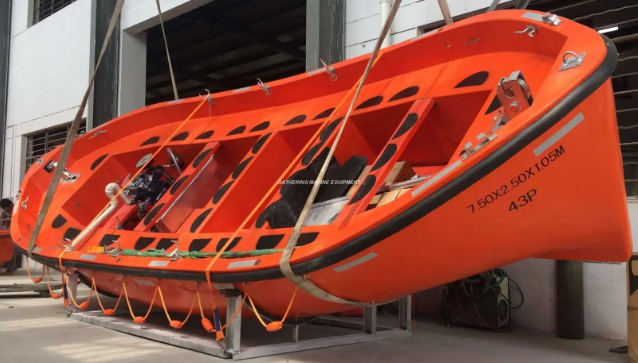
As the name suggests, this type of lifeboat is the one with no roofs and is not propelled by machinery. Instead, wooden oars are used to row the boat manually. It’s usually found on older ships and becoming obsolete due to more stringent requirements of SOLAS and other safety norms.
Davit-LaunchLifeboat
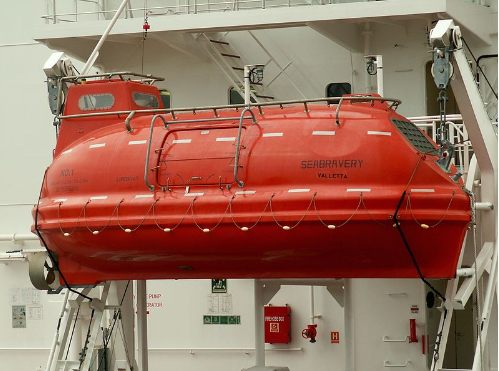
These are modern-day lifeboats used on almost all of the ships that need to fulfill SOLAS and other safety requirements norms. These are more advanced and safety-oriented compared to open-top lifeboats and can protect the sailors from harsh weather, winds, and cold water. Its name defines its function and its launch procedure, i.e. it’s lowered with the help of davits. It also contains various tools and types of equipment that can be proven useful when stranded at sea.
Freefall Lifeboats
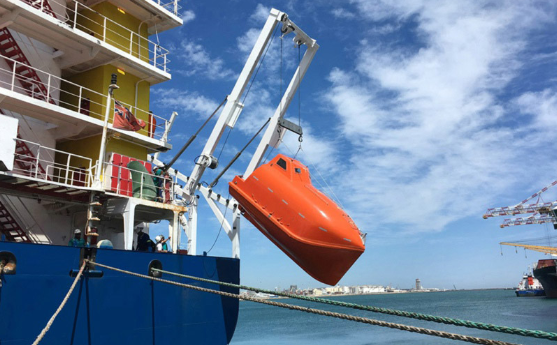
These are the 2nd most common lifeboats used on ships, every ship has two lifeboats with freefall as one of the two at the stern. It’s quite similar to a closed lifeboat with the only difference in seating arrangement and launching procedure.
How do Modern Lifeboats differ from their predecessors?
Morden lifeboats are no more than an engineering marvel that helps to save countless lives at sea. They differ from old lifeboats in various aspects such as structure integrity, space, and utilities in them.
Let’s learn what kind of utilities and essential things lifeboats have in them that can be proved quite useful in times of distress.
Tools and Equipment in a Lifeboat:
Lifeboats are equipped with various tools and equipment to ensure the safety and well-being of passengers and crew during emergencies at sea. These tools and equipment are carefully selected and maintained to help in rescue operations, navigation, communication, and survival.
Here is a list of some essential tools and equipment found in a typical lifeboat.

- Buoyant Oars:- They are floating Oars that can be used for different functions, for instance, rowing and grabbing objects that are away from the boat.
- Compass:- It is the most basic yet one of the crucial pieces of equipment on a boat that can row your chances of survival to the shore.
- Flares and Signaling Equipment:- Flares, smoke signals, and other signaling devices are essential for attracting the attention of distant ships.
- Life Jackets:- They act as lifesavers when in distress and provide time for a person to be rescued when in water. They are called life jackets for a reason.
- First-Aid Kit:- It proves quite useful as it contains necessary tablets for diseases and problems like Seasickness, bandages, paracetamol, and many more.
- Ration & Drinking Water:- Lifeboats have a specific amount of ration for everyone equally distributed for all seats in a lifeboat.
- Bailer:- This piece of equipment works when water starts to ingress in a lifeboat. It is jug-like equipment that can remove the water from the lifeboat.
- Radio & Communication Equipment:- Radios or satellite communication devices are crucial for establishing contact with rescuers and receiving instructions.
- Sea Anchor:- These are deployed to help stabilize the lifeboat in rough seas and prevent it from drifting too quickly.
- Safety Manual:- A manual with instructions on how to use the equipment and safety procedure.
- Radar reflector: A structure made of aluminum that can be fixed on top of the lifeboat so that it can be identified more easily by rescue ships.
Procedure during emergency
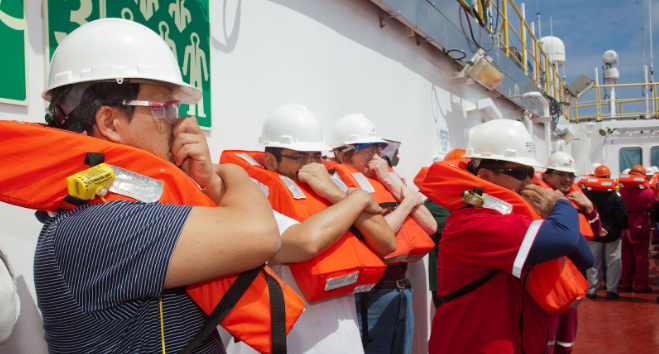
When the alarm blasts with 6 short bursts and 1 long burst it signals everyone to abandon ship, so all the ship crew members will muster at the muster station and wait for the captain’s orders.
During an emergency, all the workers will have some duty to be carried out so everyone has a role to play in the situation. After completing their given tasks everyone should be present at their muster stations near the lifeboat before boarding begins.
The chief officer is charged with navigating lifeboats. The lifeboat is usually fitted with an engine and propeller so the boat is able to navigate out of the sinking site to prevent further accidents in case it is close to where the ship sank.
Conclusion:

Lifeboats are one of the boons of mankind that have saved countless lives over a period of time. With the continuous efforts of engineering and science, lifeboats can be used to save millions of lives from distressed situations be it during a shipwreck, natural disasters, or rescue missions. Their significance lies in their ability to provide a lifeline to those in need, fostering hope and security in tight situations.
Disclaimer :- The opinions expressed in this article belong solely to the author and may not necessarily reflect those of Merchant Navy Decoded. We cannot guarantee the accuracy of the information provided and disclaim any responsibility for it. Data and visuals used are sourced from publicly available information and may not be authenticated by any regulatory body. Reviews and comments appearing on our blogs represent the opinions of individuals and do not necessarily reflect the views of Merchant Navy Decoded. We are not responsible for any loss or damage resulting from reliance on these reviews or comments.
Reproduction, copying, sharing, or use of the article or images in any form is strictly prohibited without prior permission from both the author and Merchant Navy Decoded.

